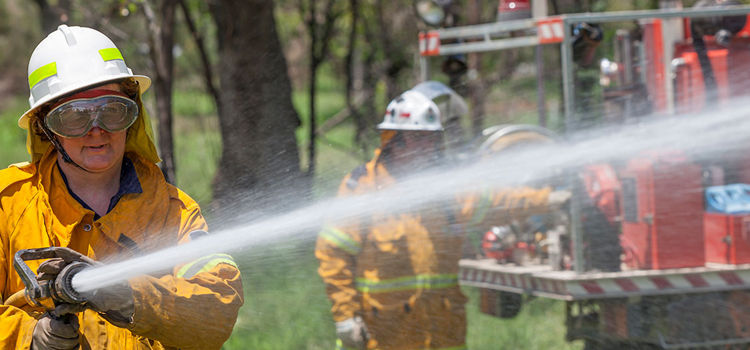
Bushfires are a nasty side of the Australian landscape.
Did you know that predicting the severity of a given bushfire season is a very challenging responsibility?
One of the biggest issues beyond the destruction they leave is that many people fail to prepare for them, and when the threat becomes real, it can be too late and too emotional to make safe and critical decisions.
With bushfires occurring regularly across the country, no matter how small (remember embers can fly great distances to create new outbreaks), the best thing you can do is be bushfire aware.
The combination of high temperatures, low relative humidity and strong winds can create ideal conditions for the rapid spread of fire. Be bushfire ready with these tips below:
- Make sure you know your risk zone and what to do when you’re away
Did you know that a bush or grass fire can happen at any time of the year but the risk is higher when that bush, grass or scrub is drier? You don’t have to live right near the bush to be at risk. Even if your home is not in the line of fire, bushfires do not discriminate. You may unintentionally drive through a risk zone, so check out the website of your local council (or of the area you’re visiting) to check for bushfire prone areas. - Be prepared to leave early if you’re near a bushfire alert region
If possible, make plans to immediately evacuate whenever a warning is issued and tune in to local radio for updates and advice. Your physical safety must be the priority. And don’t forget your pets or livestock, while checking in on neighbours is a great help too. Always follow the advice of your local fire and emergency services and the authorities. - Prepare your surroundings if you’re in a risk zone
Keep your garden well maintained and clear of debris as well as flammable items away from the house (wood piles, mulch and paint). And ensure outside items are non-combustible and make sure the pressure relief valves on LPG cylinders face outwards. Consider installing a sturdy hose that can reach around your home with ideally a reliable source of water. If you have a water tank, dam or swimming pool, consider installing a Static Water Supply sign (SWS) as that can be a huge help to firefighters for quick access to water in an emergency.
For more practical information, check out the NSW Rural Fire Service Bushfire Survival Plan or contact your local fire services authority:
- NSW: NSW Rural Fire Service and Fire and Rescue Services
- VIC: Country Fire Authority and Metropolitan Fire Brigade
- QLD: Queensland Rural Fire Service and Queensland Fire and Rescue Service
- SA: Country Fire Service and South Australian Metropolitan Fire Service
- NT: Northern Territory Fire and Rescue Service
- WA: Department of Fire and Emergency Services
- TAS: Tasmanian Fire Service
- ACT: ACT Fire and Rescue
Most household policies cover bushfires but check your home, content and car insurance is up-to-date
When updating or modifying your property, consider revaluating your building sum insured to cover the full replacement cost of these recent upgrades. Also consider whether you should insure your vehicle for ‘market value’ (what it would fetch on the open market, as is at claim time) or ‘agreed value’ – a fixed sum agreed between you and your insurer, which may be higher than market value. Find out more at CGU.














Comments (0)
Add a Comment